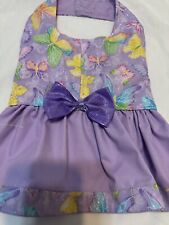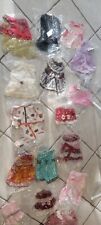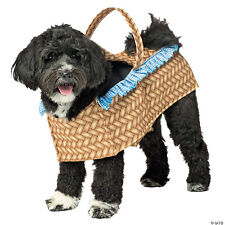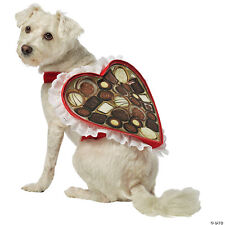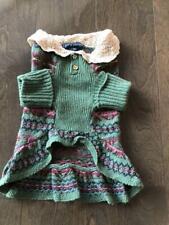Assessing the Risk a Breed Poses

Rarely if ever are dog professionals such as myself consulted when it comes to making rulings about what dog is dangerous and what is not. Concerns about a breed are often based on a broad generalization made through the observation of very few specimens of the breed.
What do I mean? Well, using a non-pit bull example: A woman I met insisted Border Collies are laid back and low key dogs suited for suburban life. Now, anyone who works with dogs knows that a Border Collie is one of the worst breeds for a suburban life. This is probably the highest energy breed known to man.
Their work drives and needs make them horrible pets for the average dog owner. Yet this woman owned a couple Border Collies who were quite abnormal for the breed. Her perception of the breed based on a very small sampling (her two dogs) and poor research was leading her to give erroneous and potentially dangerous advice. How many people got Border Collies based on this woman’s advice and later ended up with a problem dog because they could not handle it?
Are the dogs lumped into the general heading of pit bull really a danger? Let’s first look at the group of dogs called Terriers as a whole. Most terrier breeds developed in Great Britain and Ireland. These were dogs of varying sizes from the tiny Yorkshire (originally a mouser) and Norfolk, to the medium Lakeland, the ancestor to the American Staffordshire Terrier (close relative to the American Pit Bull Terrier), to the giant Airedale.
Falling between these size extremes are breeds such as the Fox Terriers, Norfolk Terriers, Scotties, Westies, Bull Terriers, Staffordshire Bull Terriers, Manchester terriers and many others. Terriers as a whole were bred to hunt vermin. They were bred to be tenacious. Though a terrier may not start a fight, they often will not back down from a challenge.
The ancestors of the dog called commonly a pit bull were bred to be an all-round farm dog first and foremost. Terriers as a whole are often stubborn, self-willed, tenacious and active. These are traits that in any breed require a knowledgeable and experienced owner. For example, Australian Cattle Dogs (heelers) have traits very similar to Terriers that make then unsuited for novice dog owners. Not only do they have a herding drive, but they are more tenacious than other herding breeds. An ACD is a tough dog – more than most people can handle. Yet we do not see them as a dangerous breed over all. Why do we assume other breeds with similar traits are risks? Is it the breed? Do pits pose a "clear and present danger"? Simply put: no.
The danger a dog poses comes from the human who owns it. In the past twenty years, I have worked with dogs in many capacities: showing, fostering, shelter work, as therapy animals, competing in performance events and as a professional trainer/consultant. I have yet to meet an American Pit Bull Terrier or generic pit bull from a good source and in a good home that posed any more danger than any other Terrier. When I think of the dangerous dogs I have known over the years, the first ones that come to mind now are a Chihuahua, an Australian Shepherd/Dalmatian cross, and a Golden Retriever.
All these dogs were from poor sources (bad breeders or pet shops) and in negligent homes. All of these dogs due to the source and homes were clearly risks and had exhibited this risk over and over. However, due to the types of dogs they were, the community and owners ignored the risks the dogs posed. The only pit bull I have had in class that posed a risk was from a bad source (rescued from a gang) and in a home not prepared for a stubborn and active breed. However, my last two classes I have had several pits from good sources and with the right owners that were just the nicest companions anyone could ask for. Now, where does the danger truly lie?
Any breed or cross from a bad source (one that does not take into consideration temperament, proper form and health/soundness when breeding) and then placed in a home not suited for the dog poses the potential for a clear and present danger to society. Most of the breeds being rounded up and banned are not threats as whole. I would trust an American Pit Bull Terrier from a good source and in a proper home more than a Labrador Retriever from a poor source and a poor home. When evaluating the threat posed by a dog – not a breed, but the individual dog – we need to look at the environment from which the dog came. The danger a dog poses first begins with the person managing the dog.
The rounding up of dogs based solely on breed is giving the public a false sense of security. Any dog can pose a threat. A good owner will maintain the dog in a safe and humane manner. A good owner will begin training and socializing as soon as the dog enters the house and not wait until a problem arises. A good owner works to prevent a problem and does not ignore things until an injury occurs. Again, a pit bull in a good home is a safer dog than a Lab in a bad home. I am seeing an increase in temperament issues in Labs due to their popularity, an increase in bad breeders and an increase in bad homes. Is the breed bad? No, just a few individuals within the breed.
Rarely is a dog "born bad." Occasionally there will be a hereditary or medical issue like a form of seizure disorder called Rage Syndrome (and must be diagnosed as Rage and not a dog who is poorly trained and socialized) or other chemical imbalance that may cause a dog to be an inherited risk. There are a few individuals who intentionally breed for heightened aggression and unpredictability in dogs. But again, this is a few individuals out of many a breeder. Risk assessment first begins with observing the human. We determine how safe or unsafe dogs will be, regardless of breed or cross.
Singling out just a few breeds does not address the real issue at hand: the owner. Remove any dog from a bad owner and leave any dog with a good owner and the danger to society will be lessened. Again, it is not the breed or cross, it is the owner who determines the risk a dog poses.
Is there a real risk with pit bulls or any breed often named in bans?
Honestly, no.
Is there a risk with the humans who may seek out these breeds?
Honestly, yes.


